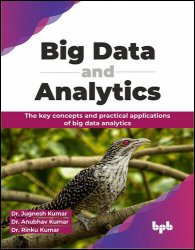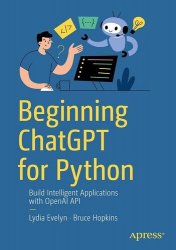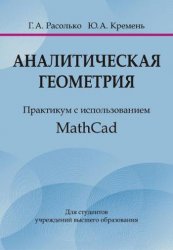 Название: Big Data and Analytics: The key concepts and practical applications of Big Data analytics
Название: Big Data and Analytics: The key concepts and practical applications of Big Data analyticsАвтор: Jugnesh Kumar, Anubhav Kumar, Rinku Kumar
Издательство: BPB Publications
Год: 2024
Страниц: 467
Язык: английский
Формат: pdf, epub, mobi
Размер: 10.1 MB
Unveiling insights, unleashing potential: Navigating the depths of Big Data and analytics for a data-driven tomorrow.
Key Features:
- Learn about Big Data and how it helps businesses innovate, grow, and make decisions efficiently.
- Learn about data collection, storage, processing, and analysis, along with tools and methods.
- Discover real-life examples of big data applications across industries, addressing challenges like privacy and security.
Description:
Big Data and analytics is an indispensable guide that navigates the complex data management and analysis. This comprehensive book covers the core principles, processes, and tools, ensuring readers grasp the essentials and progress to advanced applications. It will help you understand the different analysis types like descriptive, predictive, and prescriptive. Learn about NoSQL databases and their benefits over SQL. The book centers on Hadoop, explaining its features, versions, and main components like HDFS (storage) and MapReduce (processing). Explore MapReduce and YARN for efficient data processing. Gain insights into MongoDB and Hive, popular tools in the Big Data landscape.
Chapter 1: Introduction to Big Data - In this chapter, we learned that big data has fundamentally changed how we approach data analysis and decision-making in the digital age. Massive amounts of data are being produced as a result of the spread of digital technologies and connected devices, including data from social media, sensors, transactions, and machine-generated data.
Chapter 2: Big Data Analytics - In this chapter, we delved into big data analytics, a pivotal discipline in the modern data-driven world, enabling organizations to extract valuable insights from vast and complex datasets. It involves the systematic analysis of data using various techniques and tools to uncover patterns, trends, and relationships that can drive informed decision-making. Classification of analytics categorizes analytics into descriptive, diagnostic, predictive, and prescriptive, each serving specific purposes in data analysis.
Chapter 3: Introduction of NoSQL - This chapter tells us that big data analytics has become a transformative force in the digital era, revolutionizing how we analyze and draw conclusions from enormous and complex datasets. Organizations can use various analytical techniques depending on the needs of their respective businesses thanks to the classification of analytics into descriptive, diagnostic, predictive, and prescriptive categories
Chapter 4: Introduction to Hadoop - Hadoop's key characteristics, including distributed processing and storage, fault tolerance, and scalability, have made it the perfect solution for managing large and varied datasets. Hadoop has emerged as a top option for many data-driven applications due to benefits like affordability, compatibility with commodity hardware, and the capacity to process unstructured data. Its strong ecosystem, which includes different Hadoop distributions and Apache Pig for data processing, further strengthens its capabilities.
Chapter 5: Map Reduce - The MapReduce method involves a number of steps, such as splitting, mapping, shuffling, sorting, and reducing, which significantly increases the speed and scalability of data processing. Combiners are a useful addition to the MapReduce workflow because they reduce data transfer and increase productivity. Combiners, however, might not always be appropriate because they have the potential to make the code more complex and demand more resources.
Chapter 6: Introduction to MongoDB - The evolution of MongoDB into a potent document-oriented database, with features like schema flexibility, horizontal scalability, and support for various data types, can be seen in the database's history and development. Data manipulation is made simple by the flexible query language and CRUD operations, and data retrieval effectiveness is improved by features like count, sort, limit, and skip. Additionally, complex data processing and analysis tasks are made possible by MongoDB's strong MapReduce and aggregation capabilities.
What you will learn:
- Grasp big data fundamentals and applications.
- Master descriptive, predictive, and prescriptive analytics.
- Understand HDFS, MapReduce, YARN, and their functionalities.
- Explore data storage, retrieval, and manipulation in a NoSQL database.
- Gain practical insights and apply them to real-world scenarios.
Who this book is for:
This book caters to a diverse audience, including data professionals, analysts, IT managers, and business intelligence practitioners.
Скачать Big Data and Analytics: The key concepts and practical applications of Big Data analytics
[related-news] [/related-news]
Комментарии 0
Комментариев пока нет. Стань первым!















